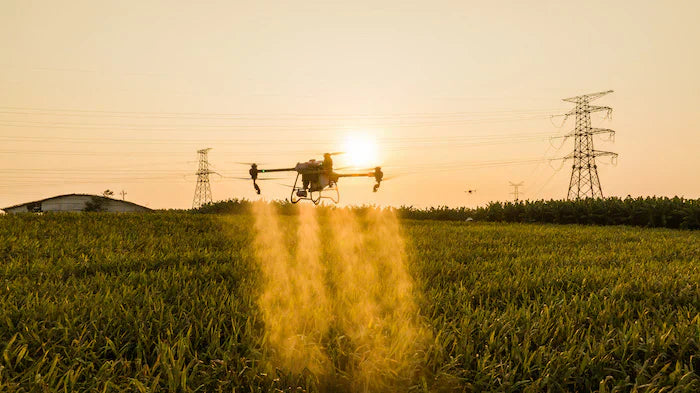
How Drones Are Used in Agriculture in New Zealand
Share
New Zealand's agricultural sector has embraced drone technology as a powerful tool to enhance productivity, reduce costs, and promote sustainable farming practices. From the rolling sheep farms of the South Island to the kiwifruit orchards of the Bay of Plenty, unmanned aerial vehicles (UAVs) are transforming how Kiwi farmers manage their operations.
In this article, we’ll look at a few different ways that agriculture drones are being used to move the industry forward.
Precision Agriculture and Crop Monitoring
One of the most significant applications of drones in New Zealand agriculture is precision farming. Equipped with high-resolution cameras and multispectral sensors, drones provide farmers with detailed aerial imagery of their crops. These images help identify variations in plant health, pest infestations, and nutrient deficiencies long before they become visible to the naked eye.
For instance, wine growers in Marlborough use drone technology to monitor vine health and optimise irrigation schedules, resulting in improved grape quality and reduced water usage.
Thermal imaging capabilities allow farmers to detect subtle temperature variations across fields, which can indicate irrigation problems or soil composition differences. This technology has proven particularly valuable for large-scale dairy operations, where maintaining optimal pasture conditions is crucial for livestock health and milk production.
Livestock Management and Monitoring
New Zealand's extensive sheep and cattle farming operations have found drones invaluable for livestock management. Farmers use drones to quickly locate and monitor animals across vast paddocks, reducing the time and labor traditionally required for these tasks. During lambing season, drones equipped with thermal cameras help farmers identify ewes in distress, enabling faster response times and improved animal welfare outcomes.
The ability to conduct aerial mustering has revolutionised how farmers move livestock between paddocks. Drones can quietly and efficiently guide animals to new grazing areas, reducing stress on both the animals and farm workers while minimising the need for traditional working dogs in some situations.
Spraying and Fertiliser Application
Drone technology has introduced new levels of precision to crop spraying and fertiliser application. Agricultural drones equipped with spraying systems can apply pesticides and fertilisers with remarkable accuracy, reducing chemical usage and minimising environmental impact. This precision application is particularly beneficial in New Zealand's horticultural sector, where kiwifruit and apple orchards require careful management of spray applications.
The technology has proven especially valuable in areas with challenging terrain, where traditional ground-based spraying equipment might struggle to operate effectively. Hill country farmers have embraced drone spraying as a cost-effective solution for controlling weeds in difficult-to-access areas.
Environmental Monitoring and Compliance
As environmental regulations become increasingly stringent, drones help farmers monitor and document their environmental compliance. They can survey waterways, track erosion patterns, and assess vegetation coverage, providing valuable data for environmental reporting and resource consent requirements. This capability has become particularly important as New Zealand farmers work to meet the country's ambitious environmental targets.
Data Collection and Analysis
Modern agricultural drones generate vast amounts of data that, when properly analysed, provide valuable insights for farm management decisions. Using specialised software, farmers can create detailed maps of their properties, track changes over time, and make data-driven decisions about resource allocation. This technology has enabled the development of precise fertiliser maps, irrigation plans, and yield forecasts, leading to more efficient use of resources and improved profitability.
Future Prospects
The role of drones in New Zealand agriculture continues to evolve as technology advances. Emerging applications include automated crop yield estimation, disease detection using artificial intelligence, and integration with other smart farming technologies.
As drone technology becomes more sophisticated and accessible, its adoption across the agricultural sector is expected to increase further, contributing to New Zealand's reputation as a leader in innovative and sustainable farming practices.
The integration of drone technology into New Zealand's agricultural sector represents a significant step forward in the modernisation of farming practices. By providing farmers with powerful tools for monitoring, analysis, and precision application, drones are helping to create more efficient, sustainable, and profitable agricultural operations across the country.
Taking the next step forward with agriculture drones
Are you wondering if drone technology is right for you? Learn more about agriculture drones or reach out with any questions you might have.



